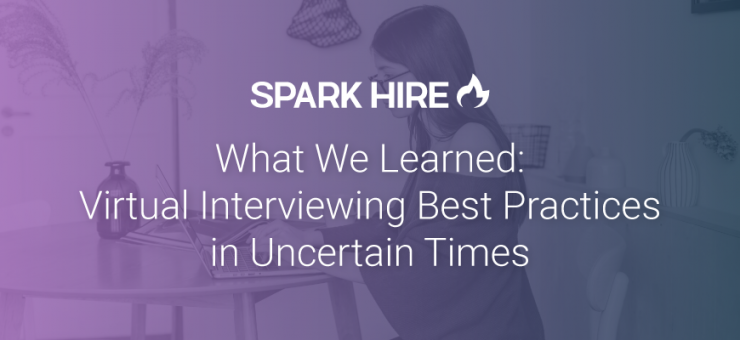Right now, business operations are fraught with changes and unpredictability. And that’s just the day-to-day. When it comes to hiring new employees, the challenge grows dramatically. That’s why we brought together Paul Berggren and Brandon Farrar of Crown Global HR, along with Strategic Talent Advisor Dr. Lisa Andrejko to bring us strategies to handle hiring in this roller coaster. These are the key takeaways from the recent webinar.
Remote adjustments
According to Paul, face-to-face interviewing allowed HR pros to rely on their instincts and impressions, as it was the convenient and easy way to assess candidates. Transitioning to a remote hiring strategy allows everyone the opportunity to build structure into their processes. By adding structure, talent assessors can truly listen to candidates and work to learn their story. With a candidate story, assessing for intangibles attributes is more accurate and builds more rapport with candidates themselves.
The early stages of the hiring process are where this strategy makes the most impact. For instance, a position’s job description should focus on what a person in the function actually does, as their competencies should lie in the work they will most likely be assigned, rather than one-off “nice to have”‘s. At the next step, applicant screening should be executed quickly, especially concerning the likely influx of applicants.
Strategic screening
As mentioned, right now open positions are receiving massive numbers of applicants. Working to narrow the scope of your applicant pool, screening can make or break the process. Ensuring you don’t miss out on quality talent, the webinar experts strongly recommend use of a candidate scorecard. These allow the team to predetermine the ideal candidate, and understand what bad, okay, and great candidate responses look like. In creating a standard, candidates either measure up or they don’t, allowing the screening process to move much more efficiently.
Candidate scorecards allow assessment to focus on the skills and attributes required for the position and to further enhance an organization’s culture. Brandon specifically mentioned, “Normally, you’d screen for talent, now you must screen for talent and skill.” The trio went on to speak about how important practicing assessments of virtual interviewing and candidates as a whole ensures consistency and points teams in the direction of unbiased hires.
Repeatable processes
To keep screening efficient, the panel recommends asking 3-5 questions during a virtual interview and maintaining 7 as an absolute maximum. This keeps the interview length manageable for both candidates and assessors. By limiting the virtual screen to 3-5 questions, selection becomes much more focused on understanding behavioral assets of candidates while getting a read on the scope of candidates’ knowledge based on their answers. Another key all three panelists agreed on was to look for a growth mindset, no matter the position or organization. Discovering what drives candidates to succeed and further their professional development indicates their compatibility to both the position and organization.
Closing tips
Wrapping up the webinar, each expert shared their final lessons and tips for hiring pros as they adjust to the ever-changing environment impacting hiring. Their suggestions were to collaborate between departments, focus interviewing for on-the-job-skills, understand each candidates’ story, and use hiring tools to explore attributes not otherwise covered in the process. This last one they discussed at length, mentioning not to ask candidates the same question within multiple steps of the process. Use this link to watch the full webinar, gain all the insights from our expert panel, and be on the lookout for our next webinar!











